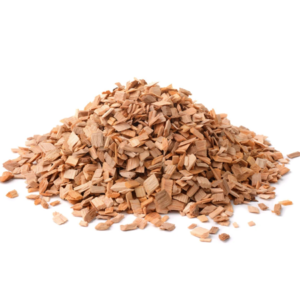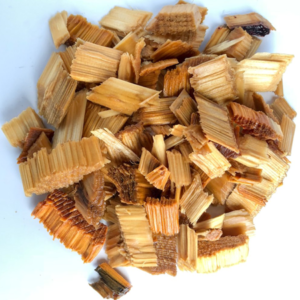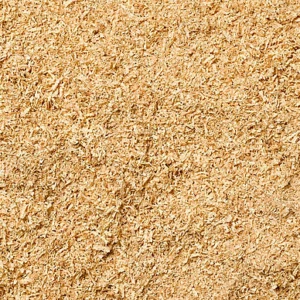Description
Description of Pine Wood Chips:
Pine tree substrate materials have traditionally been produced from freshly harvested loblolly pine (Pinus taeda) trees that were chipped and then further processed in a hammer mill through screen sizes ranging from 3/16- to 3/8-inch. The resulting end product contained a mix of particle sizes and shapes, mostly being a fibrous-like material. It was the mix of fibrous particle sizes that gave the material water-holding properties similar to some peat and pine bark substrates. Our Wood chips are from Hardwood. https://en.wikipedia.org/wiki/Woodchips
We supply hardwood and softwood chips, whole tree and mill residuals with bark or debarked, according to customer specifications. The pine wood chips are sorted to customer specifications and processed as clean pine softwood chips.
Chipping and debarking is done in the forest or at the mill depending on the logistical planning process. We can meet any sizing and quality specification. In order to ensure the highest quality, our wood chips are regularly tested according to ASTM standards for moisture, sizing, bark content, rot, and ash content.
Specification of Pine Wood Chips:
Calories > 5000kcal
Size: 0.45 cm – 4.5 cm.
Overs: > 4.5 cm.
Fines: < 0.45cm. Bark/Rot: < 2% Moisture: 50% (Typical) Mould < 2% Oak, Eucalyptus, Ash, Fir, Beech, Birch Wood Chips also available in stock. What to Do With Pine Wood Chips? Pine wood chips work well as a mulching material, but be careful about which plants you spread them around. Pine contains a high acidity level. Acid-loving plants like azaleas, blueberry bushes and tomatoes thrive when mulched with pine wood chips. Uses: – Used for manufacture of chipboard, boiler fuel, livestock bedding, landscaping. – The quality of the fuel used can have a significant impact on the reliability and the life of the boiler.PRODUCTION: Mixed hardwood chips are harvested from base-cut trees, debarked, and fed into chipping machines. They are sorted to spec and finish as clean mixed hardwood chips. SPECIFICATION of Hardwoods: Accepts: 0.45 cm – 4.5 cm 90% Maximum Overs: 4.5 cm 5% Maximum Fines: 0.45 cm 5% Maximum Bark and rot: 2% Maximum PRODUCTION: Pine Wood Chips are harvested from base-cut trees, debarked, and fed into chipping machines. They are sorted to spec and finish as clean pine softwood chips. SPECIFICATIONS: Accepts: 0.45 cm – 4.5 cm 90% Maximum Overs: 4.5 cm 5% Maximum Fines: 0.45 cm 5% Maximum Bark & rot: 2% Maximum https://tessellate-ab.com/contact-us/ The acceptance of raw material acceptance and storage: The product is performed on the plant territory. Raw material acceptance site is made of concrete slabs. Railway feeder comes to the site which can be used for raw material delivery. Access routes for trucks are also available. Pine wood chips Raw material storage site consists of storage area and area of raw material immediate supply to processing. Transport unloading is executed by a wood loader on base of excavator LIEBHERR A 924 В. Unloading runs into storage areas or directly to the working area of wood supply to processing.
Timber quality and quantity acceptance is carried out on site along with radiological control. Pellet fuels (or pellets) are biofuels made from compressed organic matter or biomass. Pellets can be made from any one of five general categories of biomass: industrial waste and co-products, food waste, agricultural residues, energy crops, and virgin lumber. Pine wood chips Wood pellets are the most common type of pellet fuel and are generally made from compacted sawdust and related industrial wastes from the milling of lumber, manufacture of wood products and furniture, and construction. Other industrial waste sources include empty fruit bunches, palm kernel shells, coconut shells, and tree tops and branches discarded during logging operations. So-called “black pellets” are made of biomass, refined to resemble hard coal and were developed to be used in existing coal-fired power plants. Pellets are categorized by their heating value, moisture and ash content, and dimensions.
They can be used as fuels for power generation, commercial or residential heating, and cooking. Pellets are extremely dense and can be produced with a low moisture content (below 10%) that allows them to be burned with a very high combustion efficiency. Pine wood chips All European heating equipment is supplied with technical data sheets indicating biofuel parameters to achieve the highest possible efficiency and efficient operation. There are often cases when the cause of failure of pellet boilers was the supplier of poor-quality pellet fuel. That is why consumers pay close attention to the quality of wood pellets. Pine wood chips The company applies to environmentally friendly raw materials for pellet production, supplied under contracts with the state forestry of Poland.
This gives us the opportunity not only to guarantee the stability of quality indicators, but also to give guarantees of the stability of the delivered product volumes. This type of cooperation predetermines the unconditional fulfillment of our obligations to counter parties. Pine wood chips Each released batch of our wood pellets corresponds to specially developed and approved technical conditions which makes our pellets competitive in both domestic and foreign markets. The ash content of our pellets is within 1% that allows one to use them for heating of private houses. Pine wood chips Diameter 6 mm; Ash content up to 1 %; Humidity up to 9%; Bulk density 630 kg/m3; Abrasion – up to 3 %; Calorific content: 4600 kcal / kg. Production techniques: The raw material enters the crusher, which is reduced to the state of flour.
The resulting mass is fed into the dryer from it – in a pellet press in which a compressed wood flour pellets. Compression during pressing increases the temperature of the material, lignin, contained in wood particles soften and stick together in a tight cylinder. To produce one ton of pellets takes about 2.3 -2.6 cubic meters of waste wood, plus 0.6 cubic meters of sawdust is burned per tonne of production. Pine wood chips https://tessellate-ab.com/product-category/wood-pellets/
The final pellets are cooled, packed in different packaging – from small 15 kg packages to big-bags (big industrial packing) weighing 1,1 st ton – or delivered to the consumer in bulk. A pellet stove is a stove that burns compressed wood or biomass pellets to create a source of heat for residential and sometimes industrial spaces. By steadily feeding fuel from a storage container (hopper) into a burn pot area, it produces a constant flame that requires little to no physical adjustments. Pine wood chips The efficiency of a pellet stove can be as high as 90% or more. …
This is more than a classic wood-burning stove, with an efficiency of only 40 to 50% (60 to 80% for recent high-efficiency stoves) and much more than an open fire, with an efficiency of 5 to 15%. Pine wood chips https://tessellate-ab.com/product-category/wood-briquettes/ Pellet stoves can only burn wood pellets (as Jodi mentioned) or biofuels such as dried corn (depending on the actual model). It would not be wise to try to burn logs or sticks inside a pellet stove, because of how a pellet stove actually works.






Reviews
There are no reviews yet.